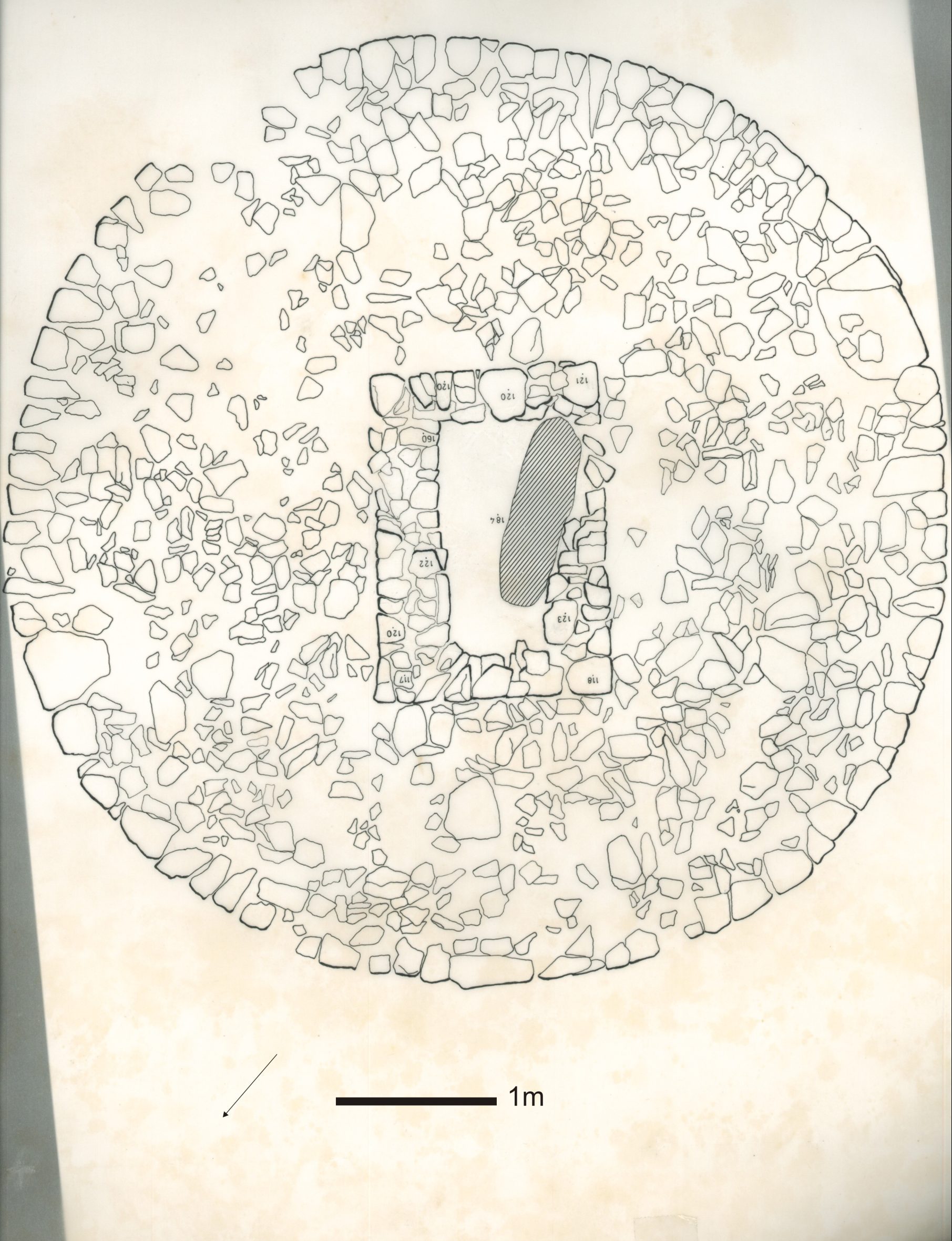Archaeological Circuit of Castro da Cola, Ourique
Pêgo da Sobreira
37º33'45.84’’N / 8º15'5.56"O
Free access
Reception and Interpretation Centre
Visits to this centre are free.
It closes on Tuesdays and Wednesdays, January 1, Easter Sunday, and December 25.
Summer (May 1 to September 15) – 9.30 a.m.-12.30 p.m. / 3 p.m.-6.30 p.m.
Winter (September 16 to April 30) – 9.30 a.m.-12.30 p.m. / 2 p.m. -5.30 p.m.
About
O Pêgo da Sobreira
The circular funerary monument of Pêgo da Sobreira is the largest of its kind known in Baixo Alentejo. It was built in the Iron Age (end of the 8th B.C. or beginning of the 7th century B.C.), and it is an individual tomb with a circular plan and a central grave covered with schist slabs. It is probably the grave of an important individual.
This type of grave is common, scattered through high points of the landscape; often, there seem to have been no settlements in their vicinity.
Access
Prepare your visit
The archaeological circuit has a Reception and Interpretation Centre near the Church of Nossa Senhora da Cola. It can be visited by people with reduced mobility (wheelchairs, baby strollers).
For more information, contact
colaassociacao@gmail.com / cacmb.ourique@gmail.com
Jorge Silva – 963090894
Reduced mobility
The archaeological site of Castro da Cola is not accessible to people with reduced mobility (wheelchairs, baby strollers), and guided tours are not available.
Children should always be accompanied by a responsible adult.
Cautionary Note
Access to this archaeological site is facilitated by the owner of the land where it is located. Keep that in mind when you visit the site, respecting it and contributing to its cleanliness, maintenance, and preservation.
Support

RESEARCH
Bibliography & useful links
ARRUDA, Ana Margarida (2001). A Idade do Ferro pós-orientalizante no Baixo Alentejo. In Revista Portuguesa de Arqueologia, vol. 3, nº 2. Instituto Português de Arqueologia, Lisboa, pp. 207-291. Disponível em: Consultar Artigo Completo → [Consultado a 22/05/2023].
BEIRÃO, Caetano de Mello; CORREIA, Virgílio Hipólito (1994). Novos dados arqueológicos sobre a área de Fernão Vaz. In MANGAS, Julio; ALVAR, Jaime (eds.), Homenaje a José Maria Blázquez, vol. 1, Ediciones Clásicas, Madrid, pp. 285-302. Disponível em: Consultar Artigo Completo → [Consultado a 23/05/2023].
CORREIA, Susana; ALFENIM, Rafael (2001). Circuito Arqueológico da Cola. In Património / Estudos, n.º 1, Instituto Português do Património Arquitetónico, Lisboa, pp. 53-54.
CORREIA, Virgílio Hipólito (1993). As necrópoles da Idade do Ferro do Sul de Portugal. Arquitectura e rituais. In Actas do 1º Congresso de Arqueologia Peninsular, Porto, pp. 351-376. Disponível em: Consultar Artigo Completo → [Consultado a 2 de maio de 2023].
CORREIA, Virgílio Hipólito; PARREIRA, Rui (2002). Roteiros da Arqueologia Portuguesa, 8 – Cola. Circuito Arqueológico. Instituto Português do Património Arquitectónico (IPPAR), Lisboa, pp. 56-57.
RAPOSO, Jorge (2001). Sítios arqueológicos visitáveis em Portugal. In Almadan. 2ª série: 10, Almada, pp. 100-157. Disponível em: Consultar Artigo Completo → [Consultado a 22 de março de 2023].
VILHENA, J. (2006). O Sentido da Permanência. As Envolventes do Castro da Cola nos 2º e 1º Milénios a.C.. Tese de Mestrado apresentada à Faculdade de Letras da Universidade de Lisboa.
https://www.patrimoniocultural.gov.pt/pt/patrimonio/itinerarios/alentejo-algarve/02/
https://arqueologia.patrimoniocultural.pt/index.php?sid=sitios&subsid=48992
https://arqueologia.patrimoniocultural.pt/index.php?sid=visitaveis&subsid=48992
http://www.cm-ourique.pt/pt/menu/322/circuito-arqueologico-da-cola.aspx
